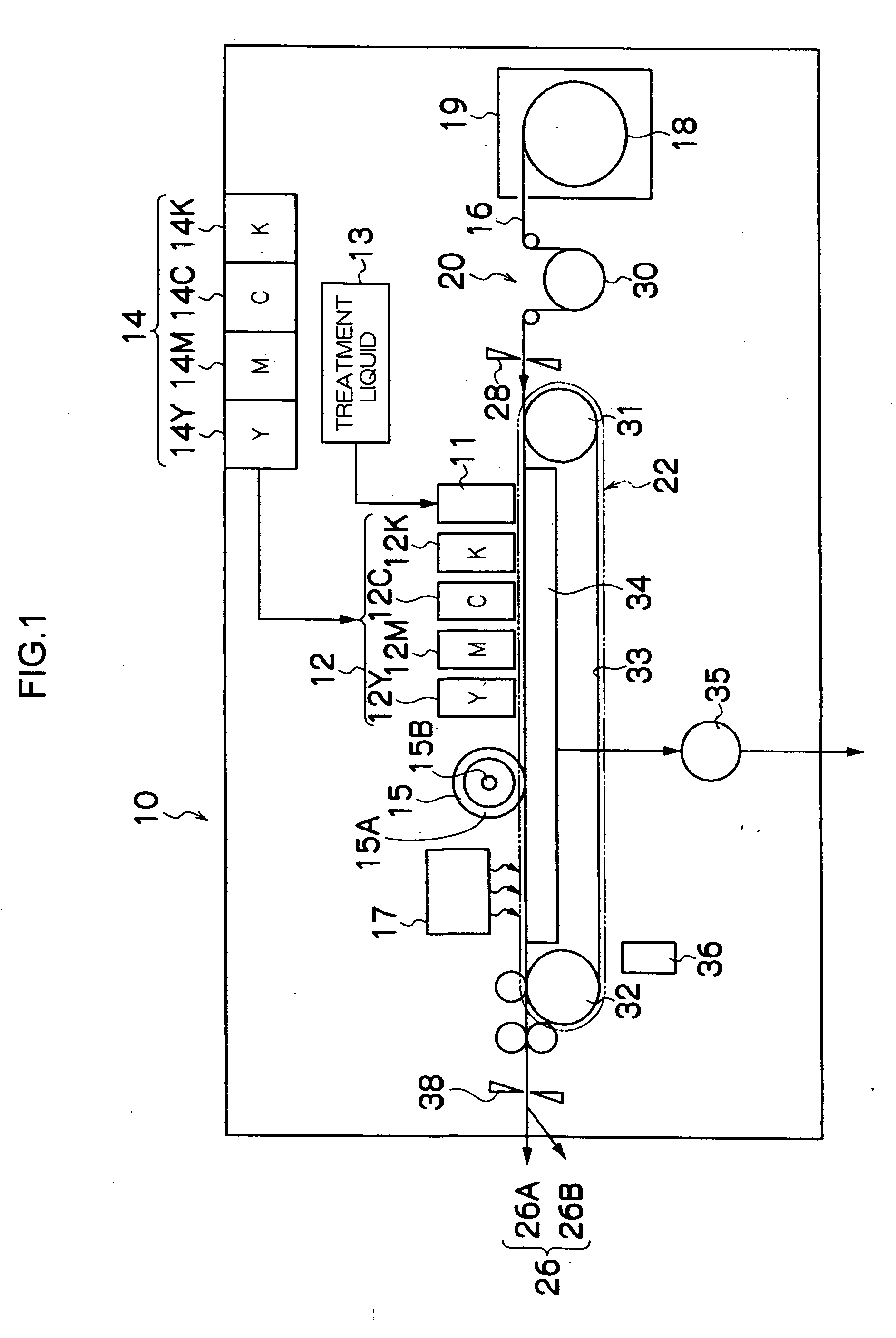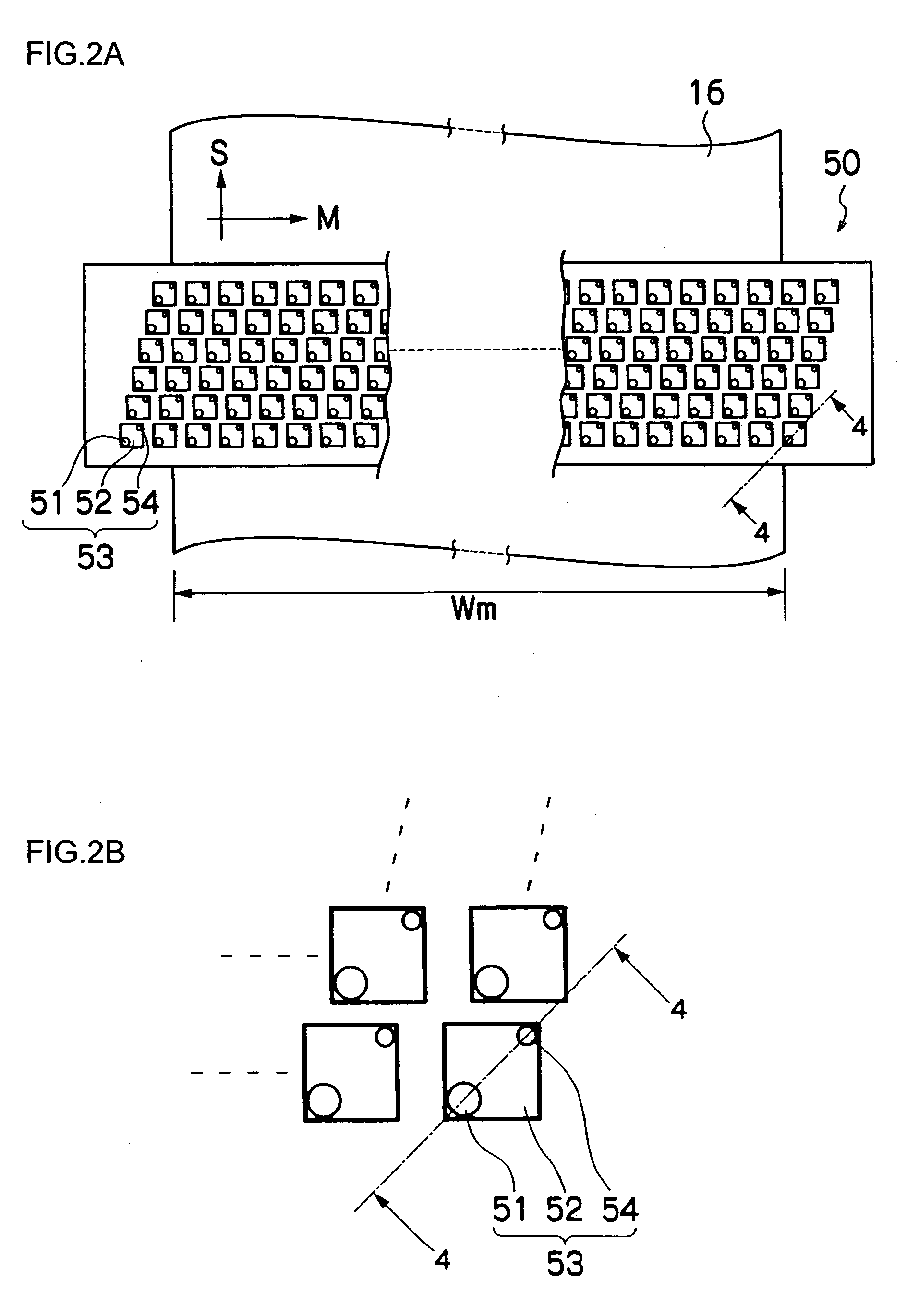Ink set for inkjet recording, and image recording method and image recording apparatus
a technology of inkjet recording and inkjet printing, which is applied in the direction of inks, instruments, printing, etc., can solve problems such as inability to solve problems, and achieve the effects of reducing the number of inkjet printing jobs
- Summary
- Abstract
- Description
- Claims
- Application Information
AI Technical Summary
Benefits of technology
Problems solved by technology
Method used
Image
Examples
working examples
[0219]Next, the present invention is described in detail by means of working examples, but the present invention is not limited to these examples. In the following description, the symbol “%” refers to the “weight percentage (mass standard)”, unless stated otherwise.
example 1
Practical Example 1
[0220]Practical example 1 involved an experiment which studied how the ratio of the pigment particles having a particle diameter (particle size) of 150 nm or greater, with respect to the whole of the pigment particles contained in the first liquid (ink), affects the optical density, bleeding, fixing strength and color reproduction of secondary colors.
Preparation of Ink Compositions A to H as First Liquid
[0221]The compositional components listed below were mixed in such a manner that the total quantity was 500 mass by weight, 2 mass by weight of 2,2′-azobis(2,4-dimethyl valeronitrile) was added as a polymerization initiator, and sufficient nitrogen gas substitution was carried out to yield a synthetic resin mixture liquid.
[0222]stearyl methacrylate: 20 mass by weight
[0223]styrene macromer: 5 mass by weight
[0224]styrene: 10 mass by weight
[0225]polypropylene glycol (9) methacrylate: 10 mass by weight
[0226]methacrylic acid: 10 mass by weight
[0227]2-mercaptoethanol: 0....
example 2
Practical Example 2
[0270]Practical example 2 involved an experiment which investigated how the pH differential between the first liquid and the second liquid affected the optical density, bleeding characteristics, fixing strength and secondary color reproduction.
[0271]The inks J, K, L, M in experiments 201 to 207 all had the same volume average particle diameter and particle ratio as those of ink C in practical example 1, but the pH of these inks was varied.
TABLE 3Vol % ofparticlesofVolumediameteraverageReproduction150 nmparticlepH ofpH ofofExperimentPigmentorsizeinkliquidpHOpticalFixingsecondaryNo.Inkgreater(nm)liquidcompositiondiff.densityBleedingstrengthcolors201Ink J2.0709.03.06.01.75goodaveragegood202Ink K2.0709.03.55.51.75goodgoodgood203Ink C2.0708.53.551.75goodgoodgood204Ink L2.0706.53.531.75goodgoodgood205Ink M2.0706.03.52.51.70averageaveragegood206Ink C2.0708.55.531.70goodgoodgood207Ink C2.0708.56.02.51.65averageaveragegood
[0272]Consequently, as revealed by experiments 201 ...
PUM
| Property | Measurement | Unit |
|---|---|---|
| particle diameter | aaaaa | aaaaa |
| glass transition temperature Tg | aaaaa | aaaaa |
| volume particle diameter distribution | aaaaa | aaaaa |
Abstract
Description
Claims
Application Information
 Login to View More
Login to View More - R&D
- Intellectual Property
- Life Sciences
- Materials
- Tech Scout
- Unparalleled Data Quality
- Higher Quality Content
- 60% Fewer Hallucinations
Browse by: Latest US Patents, China's latest patents, Technical Efficacy Thesaurus, Application Domain, Technology Topic, Popular Technical Reports.
© 2025 PatSnap. All rights reserved.Legal|Privacy policy|Modern Slavery Act Transparency Statement|Sitemap|About US| Contact US: help@patsnap.com



